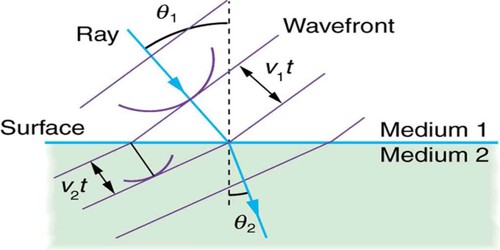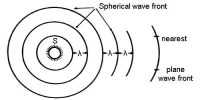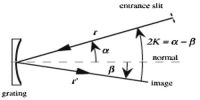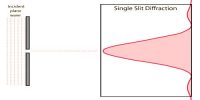Huygens’s Principle – Propagation of Light Waves
If the source of light is known, then the position of wavefronts can be determined by ordinary rule. Even if the source is not known, but the position and the shape of wavefronts for any time are known, then the position and the shape of wavefronts for other times can be found out by applying Huygens’s principle. According to Huygens’s principle, any point in the wavefront can be considered as the source of spherical waves. These waves are called secondary waves. These secondary waves travel forward with the same velocity like the principal wave. We can state the Huygens’s principle in the following way.
Statement: Each point on any wavefront is considered as the source of oscillation or disturbance. The waves generated from those secondary sources progress forward with the same velocity of the principal wave. It a surface is drawn by the tangents of those secondary waves at any time, then that surface will represent the new position of the wavefront at that time.
Huygens’s Principle provides a convenient way to visualize refraction. If points on the wavefront at the boundary of a different medium serve as sources for the propagating light, one can see why the direction of the light propagation changes.
















